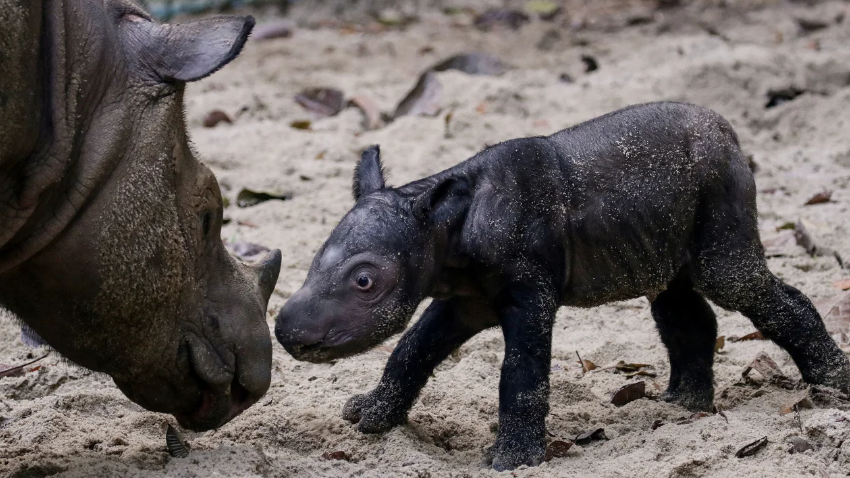
©Antara Foto/Reuters
Pre-reading questions:
- What comes to mind when you hear the word “rhinoceros”?
- What do you believe are the unique characteristics of rhinoceroses?
Vocabulary:
- conservation /kon-ser-VEY-shuhn/
- endangered /en-DEYN-jerd/
- illegal /ih-LEE-guhl /
- capture /KAP-cher/
- dense /dens/
[noun] – the protection of plants and animals, natural areas, and interesting and important structures and buildings, especially from the damaging effects of human activity
Conservation organizations work to protect endangered species and their habitats.
[adjective] – animals or plants that may soon not exist because there are very few now alive:
Endangered animals need our protection.
[adjective] – not allowed by law
The illegal hunting of rhinos for their horns has driven them close to extinction.
[verb] – to take someone as a prisoner or to take something into your possession, especially by force
The police managed to capture the fugitive who had been on the run for weeks.
[adjective] – having parts that are close together so that it is difficult to go or see through
The dense forest is home to a wide variety of wildlife.
Article reading:
The birth of a 27-kilogram (60-pound) Sumatran rhino calf, covered in black hair, was captured in heartwarming photos shared by the forestry ministry. Remarkably, just 45 minutes after her natural birth, the calf stood on her own and began nursing from her attentive mother, Ratu, a mere four hours later. These unique creatures, with an average height of 4 to 5 feet (about 1.5 meters) and a body length of 8.2 feet (2.5 meters), are well-suited to Sumatra’s dense tropical forests. However, their slow reproductive rate, coupled with intermittent births, underscores the urgency of ongoing conservation efforts. Programs like the Sumatran Rhino Sanctuary, which has successfully raised three calves, offer hope for the species’ survival, particularly following its local extinction in neighboring Malaysia in 2019.
Comprehension questions
- Where was the critically endangered Sumatran rhino calf born, and what significant event does this birth mark?
- What are the key challenges that are pushing the Sumatran rhino species closer to extinction?
- How long did it take the newborn calf to stand on its own after its natural birth, and what role does this play in the story?
- According to the International Rhino Foundation (IRF), what is the current estimated population of Sumatran rhinos, and where are they found?
- What is the significance of the Sumatran Rhino Sanctuary, as mentioned in the article, and how has it contributed to the species’ conservation efforts?
Discussion questions
- Have you ever come across a news story or heard about a situation where a rare animal was at risk of disappearing, similar to the Sumatran rhinoceros in the article? If yes, could you share that experience and how it made you feel about the importance of protecting endangered species? If not, how do you think people might react to such a situation, and why do you believe it’s essential to safeguard these animals?
- The article mentions the birth of the Sumatran rhino calf and the efforts of conservation programs like the Sumatran Rhino Sanctuary. Can you think of any ways your community or country contributes to wildlife conservation or the protection of endangered species? If yes, please share some examples and your thoughts on their effectiveness. If not, what measures do you think your community or country could take to help endangered animals, like the Sumatran rhinoceros?
- Do you think the birth of the Sumatran rhino calf in Way Kambas National Park is a positive development for the conservation of this species?
- The article mentions that Sumatran rhinos have a slow reproductive rate, and there are now fewer than 80 left. Why do you think some animals reproduce slowly, and how does this impact their survival in the wild? What strategies can conservationists use to address this challenge?
- The Sumatran Rhino Sanctuary is highlighted as a program helping to protect these rhinos. In your opinion, what are the key elements of a successful wildlife conservation program, and why is it important to have such initiatives to save endangered species like the Sumatran rhinoceros?